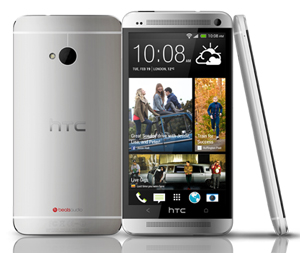As technology has increased over the years, the devices that we carry with us have gotten smaller and more powerful. In situations where we might of once reached for our trusty point and shoot cameras, we are now reaching for our smart phones and tablets instead to capture the world around us. The Apple iPhone was one of the first major devices on the scene in this regard and justifiably so, has been a staple of mobile photography ever since. However, Android devices have come along way since their introduction to the market in 2008 with the HTC Dream (otherwise known as the T-Mobile G1).
Each year it seems that Android mobile devices are getting better and better while also offering customers choice, which certainly helps to explain their massive market share dominance (over 70% of all smart phones worldwide run Google’s mobile OS). When it comes to mobile photography, Android devices manufactures are constantly trying to innovate and out do each other (and the iPhone). This has lead to improved optics, image quality, low light performance and in some cases, resolution as well.
So where does the HTC One fit into all of this? What exactly is the UltraPixel camera sensor they use? Who is Zoe? and yes…does this phone actually take good photos? Lets find out…

Specs
- CPU – Qualcomm Snapdragon 600 quad core (1.7Ghz)
- Memory – 2GB DDR2
- Storage – 32gb/64gb
- Display – 4.7 inch full HD (1080p) at 468PPI (Pixels Per Inch)
- Camera – HTC UltraPixel 4.0mp f2.0 at 28mm
- Android – 4.1.2 with HTC Sense software overlay
- Sim Card – Micro
- Battery – 2300 mAh
- Sensors – Gyro sensor, accelerometer, proximity sensor, ambient light sensor
- Sound – HTC Boomsound w/ Beats Audio
- Network – GSM, CDMA, HSPA, LTE
- Colors – Silver, Black, Red, Blue (depending on your carrier)
- Bluetooth – 4.0 compliant
- Size – 137.4 x 68.2 x 9.3mm
- Weight – 143g
Build Quality
One of Steve Job’s best traits was his relentless desire to fuse form with function when it came to Apple products. For many people, this has been a sore point when it came to Android devices. People like myself quickly found out that while we preferred the openness and customization that Android offers over IOS, we were stuck with plastic phones that function beautifully, but felt..well cheap. The HTC One completely changed that. The meticulous nature in which HTC went about constructing this 4.7 inch Android device doesn’t go unnoticed or unappreciated. HTC went so far to even develop a whole new process for making the HTC One because they wanted to do something different, something more polished that Android devices hadn’t seen yet. You can check out this short behind the scenes video that HTC released soon after the One was made public.
After using the phone for nearly six months, I can honestly say that this is probably the best built phone I have ever used. It feels solid and well made, fits comfortably in my hand and it can handle being roughed up a bit. How many times have you dropped your phone or scratched the screen because you put your phone in the same pocket as your keys? HERE is a link to another video that I found on YouTube that shows just how tough this phone truly is.
Android Fragmentation

For those of you that are not familiar with Android, 4.1.2 (which the US version of the HTC One currently runs on) is not the latest Android software available from Google (which is 4.3 at the time this blog post was published). What happens is that unlike Apple, who builds both the software and hardware together, Android manufacturers are given the Android OS for free from Google, but than are responsible for building their own devices. Because there is only so much innovation that can happen when it comes to a rectangular like device that has a beautiful screen and camera, these manufacturers generally choose to lay a small layer of their own software on top of the stock Android operating system to help separate their phones or tablets from the competition (with HTC this is called “Sense”). The problem is that once Google releases the latest Android OS, these manufacturers must update their own software to work with the new update, forcing customers to wait to have the latest features directly from Google. On top of this, many cell phone carriers (such as T-Mobile, AT&T, Verizon & Sprint) also want to “make sure” these updates comply with their own in house quality testing, causing potentially even further delays. This issue of having multiple versions of Android on a variety of devices is known has “fragmentation”. It is an issue that the the people at Android are working hard to fix (potentially as soon as the fall release of Android 4.4 if rumors are true).
It is important to note that I have word from the fine folks at HTC that the One will be updated to 4.3 (completely skipping 4.2) very soon.
Android 4.1.2 w/ HTC Sense
As I talked about above, the HTC One currently runs Android 4.1.2 (in the US) with HTC’s own software laying on top of Android, called HTC Sense. While I generally prefer to use devices that come with stock Android straight from Google (like the Nexus line of devices), HTC Sense certainly does have a handful of nice features that I have grown to enjoy over the last few months.
HTC Boomsound (Beats Audio)
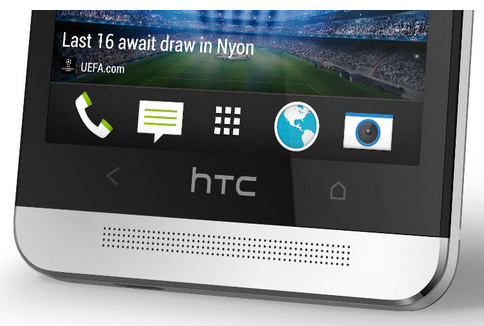
HTC partnered with Beats Audio to help provide sharper, richer and louder sound than any other mobile device. The results? A home run! The HTC One sounds better than any other mobile phone or tablet I have ever used. The built in amplifiers help to deliver crisp non distorted sound. When the phone first arrived in the mail and I began to experiment with it, my wife was convinced that I was listening to my computer speakers when she walked into my office. As someone that loves music and hates having to put my ear right next to my mobile device when watching a movie, this has become one of my favorite features of the HTC One outside of the camera (which we will get to shortly).
HTC BlinkFeed
 The idea behind BlinkFeed is actually rather simple. HTC wants you to stay updated with the info and content you want. All you have to do is choose your social networks (such as Facebook or Twitter), news platforms (such as CNN or the BBC) and RSS feeds from other publications you are interested in and BlinkFeed will sort through it all for you. The end result is a scrolling feed on one of your home screens of content that is aggregated from all of the sources you initially picked.
The idea behind BlinkFeed is actually rather simple. HTC wants you to stay updated with the info and content you want. All you have to do is choose your social networks (such as Facebook or Twitter), news platforms (such as CNN or the BBC) and RSS feeds from other publications you are interested in and BlinkFeed will sort through it all for you. The end result is a scrolling feed on one of your home screens of content that is aggregated from all of the sources you initially picked.
While I thought this feature initially wasn’t going to be useful for me, it ended up doing a great job of saving me time when it came to consuming content and saying updated. *photo via SlashGear
HTC Video Highlight
 A surprising feature that I ended up using more than I initially planned was the Video Highlight option found in the Gallery App under “Events”. When you take a number of photos from a single event, such as I did with my son playing in our backyard, the HTC One will automatically select some of the best photos (taking into account things like sharpness & seeing peoples faces) and put them into a nicely made 30 second video. From there you can choose from a small variety of music themes as well as change the sequences of images if you want. Once you are happy with the results, you can easily share the video with friends or family.
A surprising feature that I ended up using more than I initially planned was the Video Highlight option found in the Gallery App under “Events”. When you take a number of photos from a single event, such as I did with my son playing in our backyard, the HTC One will automatically select some of the best photos (taking into account things like sharpness & seeing peoples faces) and put them into a nicely made 30 second video. From there you can choose from a small variety of music themes as well as change the sequences of images if you want. Once you are happy with the results, you can easily share the video with friends or family.
The Camera
Now that we have talked the specs, build quality and software features of HTC One, lets get to the main reason many of you are still reading this review. The Camera. When I first heard that HTC was planning to rock the boat with their camera, I was relieved. For too long, camera manufactures (and smart phone makers) have touted megapixels and the end all be all defacto metric to judge quality in a camera. This however is mostly a marketing ploy. If you are told that more mega pixels mean having a better camera and than you read that the iPhone has 8mp and the HTC One only has a 4mp sensor (known as UltraPixel), which one will you think is better? In reality, the quality of images that come out of any camera, let alone a smart phone, is much more complex than a simple number found on the box of the device itself.

Image quality is based on the size of the sensor, the optical lenses used, software feature sets and of course, the end user. With the HTC One, HTC managed to create a very unique camera setup that has proven to be a champion in low light situations, an area that most camera phones easily fail at. It uses an impressive f/2.0 aperture, HTC’s latest next generation image processing chip and built in OIS (Optical Image Stabilization) on top of its UltraPixel sensor to produce the images it is capable of. Is the camera perfect? No, as there are some trade offs to the route that HTC choose, but lets look closer at the sensor first before we talk more about the camera.
UltraPixel
With the 4mp UltraPixel camera sensor, HTC choose to focus on the quality of pixels rather than the number of megapixels. The problem with most phones is that they all tend to use the same sized camera sensor, which is incredibly small. The issue is that if you try to cram more megapixels into a small sensor, you are effectively creating smaller pixels because each pixel still has to exist within the same confined space. With smaller pixels, you generally can’t capture the same amount of light and detail as larger pixels. To HTC, this means that by opting for a 4mp sensor they had the ability to capture up to 300% more light than many of the 13 megapixel cameras on the market.

The pixels on the UltraPixel sensor are 2.0 micrometer’s long, which is effectively twice the surface area of the standard 1.4 micrometer pixel found in 8mp camera and much bigger than the 1.1 micrometer pixel found in 13mp sensors. It is this fact that allows the HTC One to shine in low light situations that would generally have other camera phones struggling to capture any detail at all.
Camera Features
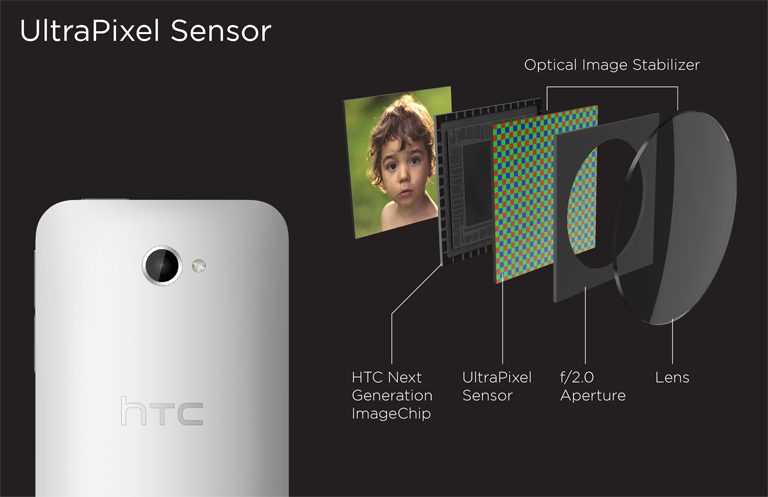
As I had mentioned previously, the HTC One has a 4.0 mp camera that uses an f/2.0 aperture with Optical Image Stabilization (the first Android manufacturer to do so), all of which work together to help you capture images in low light. You also have a wide variety of settings at your disposal, such as photo capture modes (HDR, Macro, Portrait and Night for example), panorama mode, full HDR Video, GPS tagging and face detection like many other cameras out there on the market. But what about the features that are a little more unique to the HTC One?
Custom Image Adjustments
 Just as if you were using a professional DSLR, you can customize the image adjustments to the jpg photos you are taking. Do you find that your images always need a touch more sharpness? Simply increase the sharpness slider. Contrast, Exposure? No problem. By adjusting these settings, you are effectively making universal edits to any image you capture after these settings are saved.
Just as if you were using a professional DSLR, you can customize the image adjustments to the jpg photos you are taking. Do you find that your images always need a touch more sharpness? Simply increase the sharpness slider. Contrast, Exposure? No problem. By adjusting these settings, you are effectively making universal edits to any image you capture after these settings are saved.
All in all you can adjust exposure, contrast, saturation and sharpness. It is important to note that these changes are final with the JPG images capture with the camera.
Continuous Shooting (Burst Mode)
 One of the best features of the HTC Camera is how the burst mode operates. When this setting is turned on, it allows you to capture up to 99 images consecutively when you hold down the shutter button. While this sounds great at first glance, you might soon realize that you now have 99 more images on your phone that you have to deal with when all you wanted was that one perfect frame. With the HTC One, once you are done capturing your series of images, you will be taken to a screen that allows you to select the “keepers”. Simply tap on the ones you wish to keep around and delete the rest instantly.
One of the best features of the HTC Camera is how the burst mode operates. When this setting is turned on, it allows you to capture up to 99 images consecutively when you hold down the shutter button. While this sounds great at first glance, you might soon realize that you now have 99 more images on your phone that you have to deal with when all you wanted was that one perfect frame. With the HTC One, once you are done capturing your series of images, you will be taken to a screen that allows you to select the “keepers”. Simply tap on the ones you wish to keep around and delete the rest instantly.
Zoe
 In an attempt to make sure you truly capture the scenes you are trying to document, HTC has created Zoe. When this feature is enabled, it allows you to take up to 20 photos + a 3 second video clip. The beauty of Zoe is that the camera is always buffering what it is seeing. When you tap your screen to capture a “Zoe”, you are actually capturing a number of photos from a second before you turned the feature on, increasing your chance of getting that one perfect frame or short video clip.
In an attempt to make sure you truly capture the scenes you are trying to document, HTC has created Zoe. When this feature is enabled, it allows you to take up to 20 photos + a 3 second video clip. The beauty of Zoe is that the camera is always buffering what it is seeing. When you tap your screen to capture a “Zoe”, you are actually capturing a number of photos from a second before you turned the feature on, increasing your chance of getting that one perfect frame or short video clip.
Additional Features
Additionally there are two features that I am very intrigued by, but I haven’t been able to take advantage of them just yet. The provided screenshots and info were provided by HTC’s own website.
Object Removal
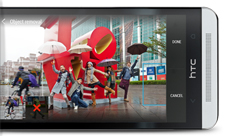 When setting up for that perfect shot, it is frustrating when objects enter your frame, such as other people walking in front of the camera. With object removal, you can easily remove unwanted objects and keep the parts and people you want in your photo.
When setting up for that perfect shot, it is frustrating when objects enter your frame, such as other people walking in front of the camera. With object removal, you can easily remove unwanted objects and keep the parts and people you want in your photo.
Sequenced Action Shots
 While I talked about the burst mode, other option within this feature is the ability to merge images together from a burst. You can choose up to five action pictures to merge together, giving you the ability to easily create some pretty dynamic images on the spot.
While I talked about the burst mode, other option within this feature is the ability to merge images together from a burst. You can choose up to five action pictures to merge together, giving you the ability to easily create some pretty dynamic images on the spot.
Camera Weaknesses
As I mentioned previously, the camera on the HTC One is not perfect. Here is a short list of some of the cameras current shortcomings.
- While it tends to perform beautiful in low light and challenging situations, some photography enthusiasts might not be thrilled with the pixel detailed captured in a 4mp camera once you begin to zoom in. For example, a 13mp camera obviously captures images at a higher resolution than a 4mp camera. At first glance at a small size, there is probably not much difference between the two in terms of details. However once you begin to crop or zoom into an image, the difference becomes more apparent.
- Auto-focus with fast moving subjects does ok, but not great. To be fair, this is an issue with nearly every mobile device I have used.
- The HDR mode inside the camera could use some work. I tend to get much better results when using a 3rd party app such as Pro HDR Camera.
- One of my favorite features of camera application with Android mobile devices is called “Photo Spheres“. This feature allows you to capture 360 panoramas, effectively creating your own Google Street View’s from any location around the globe. The HTC One with Android 4.1.2 does not come with Photo Sphere installed. UPDATE: You can however install the APK file from the “Google Edition” of the HTC One to get this feature. More info HERE.
Gallery
Lets get to the images themselves. The first set of images are straight out of the camera. No edits. (click on the images to enlarge the photo on your screen).
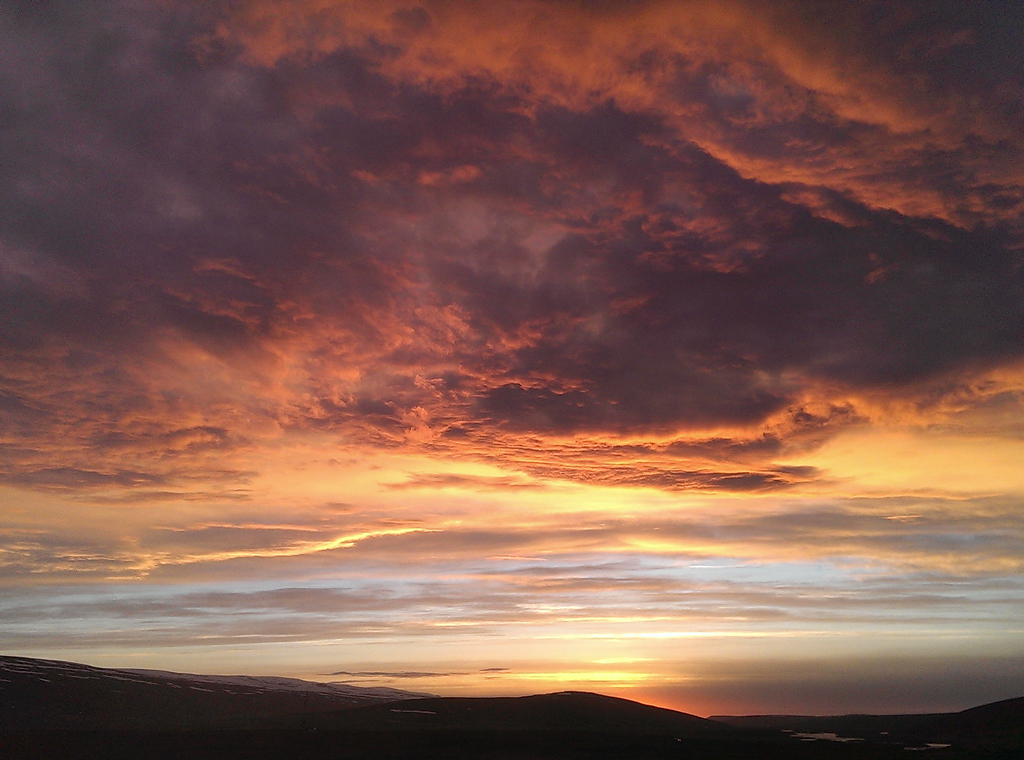
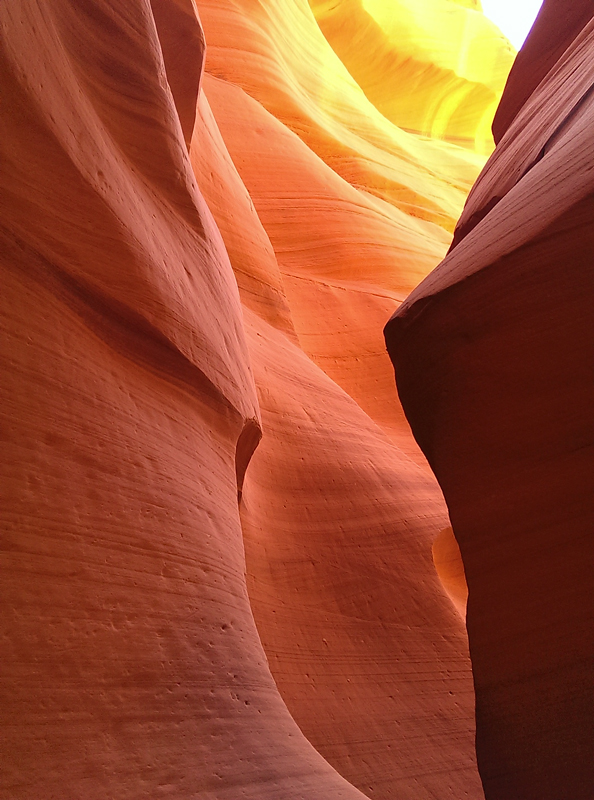





The following images were all taken with the HTC One, but also edited with Nik Software’s Snapseed. To me, these images truly show you what this camera is capable of capturing.
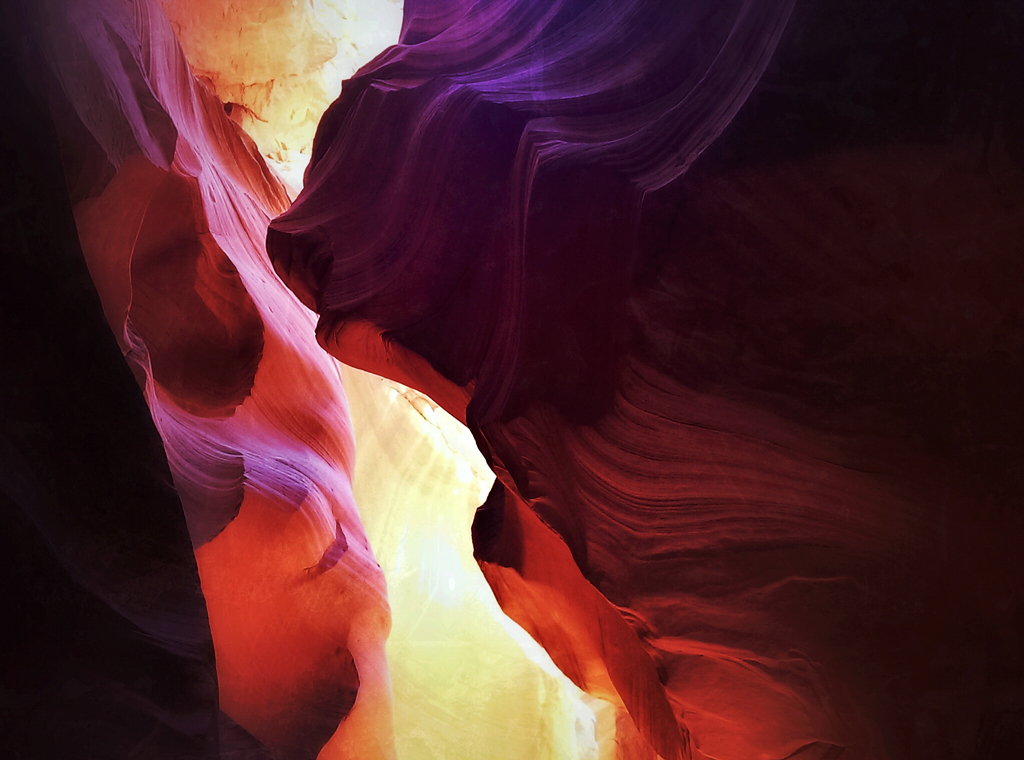







Side by Side
Even though mobile photography has come along way over the last 5 years, there will always be photographers that either doubt or look down at it as if it is a lesser form of creative visual expression. Because of the massive following I have throughout multiple social networks, I occasional will get a photographer that complains about how many mobile images I share throughout my travels around the globe. To me, this is amusing as one of their talking points generally turns to IQ (Image Quality). In light of this, I decided to have a little experiment with all of you. The following two images where taken in a slot canyon near Paige, Arizona called “Lower Antelope Canyon”. One was taken with the HTC One and one was taken with a Canon 1Dx, a $7k professional DSLR. Can you tell me which one is which 🙂
As Chase Jarvis once said, “the best camera is the one that’s with you”. I agree 🙂
* The Canon file was unedited while the HTC One was pushed through Snapseed.
Final Thoughts
If the above comparison is any indicator, the HTC One is one heck of a camera. Having used it for a number of months, across multiple continents and in a variety of situations…I can say that I have been very happy with the HTC One. Is it perfect? No. While the build quality is without comparison in the Android world, the HTC Sense software can be both helpful and a hindrance depending on your needs. While the camera does a remarkable job in low light situations, as usual, there is always room for improvement. Tracking moving subjects more accurately and potentially offering a slightly higher resolution (megapixel) sensor might help with cropping images, even if that was just improved to 6mp or 8mp.
However the reality of where and for what purpose I use mobile devices for photography has to come back into the conversation. I would say that nearly 98% of my mobile images are used purely for Instagram, Facebook, Twitter and Google+ (i.e. Social Media/Marketing), which means that the max resolution I will ever really need is around 2048x because that is max width/height for images uploaded to most social platforms. If I am shooting for a publication or using my images in one of my books, I will continue to reach for my professional equipment. The reason I mention this is that sometimes I feel photographers are unrealistic with the intentions of the devices they own. The camera on my mobile phone doesn’t need to take Phase One quality images for me to be happy with it, but rather it needs to do a good job at helping me bring my followers along on my adventures around the world. Snapping a great image of a beautiful sunset in Iceland and immediately throwing it into Snapseed so that I can share it on Google+ and Instagram instantly is my goal. It takes months and sometimes years for me to edit my professional work to share with the masses…it takes me minutes to share my mobile content with the world. If you are an photographer that uses Android devices, you should check out Vol 1. & Vol 2. of the Twenty Android Apps Every Photographer Should Have blog series.
While I am connected to a wide variety of tech companies and phone manufacturers which allow me to constantly have a slew of devices on my desk at any given time (Nexus 7, Nexus 10, HTC One, Nexus 4, Motorola X and Nokia 1020 and a few I can’t talk about currently), the HTC One is still my daily phone. In the end, that says more about the phone than anything I could write in this review. Maybe when HTC’s unannounced 5.9 inch One Max comes out, things will change. Who knows?
*Option A was taken with the HTC One and option B was taken with the Canon 1Dx
* FULL DISCLOSURE: HTC did not ask for this review nor did they pay me. They did however send me an HTC One to experiment with as I saw fit.


